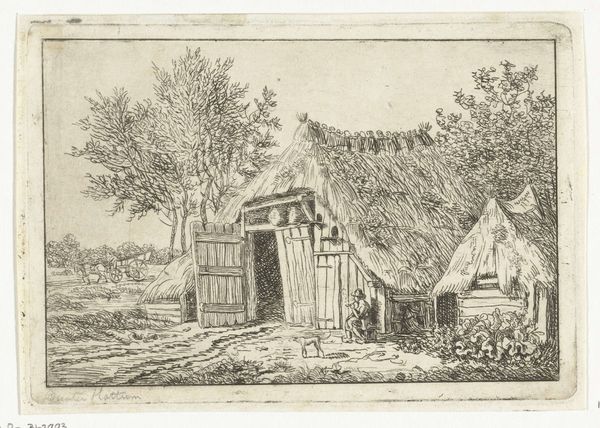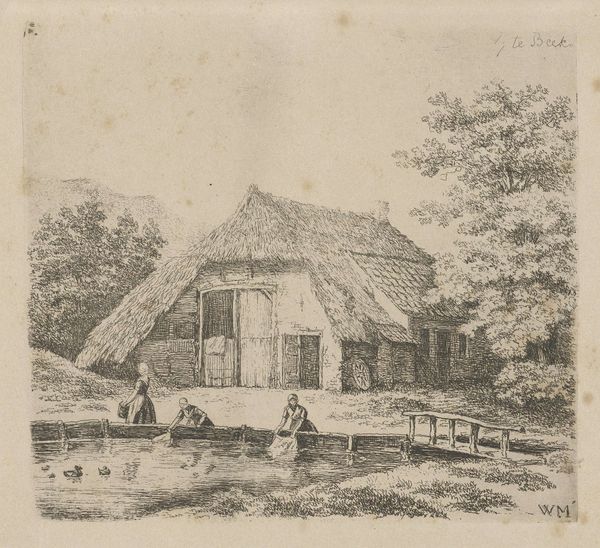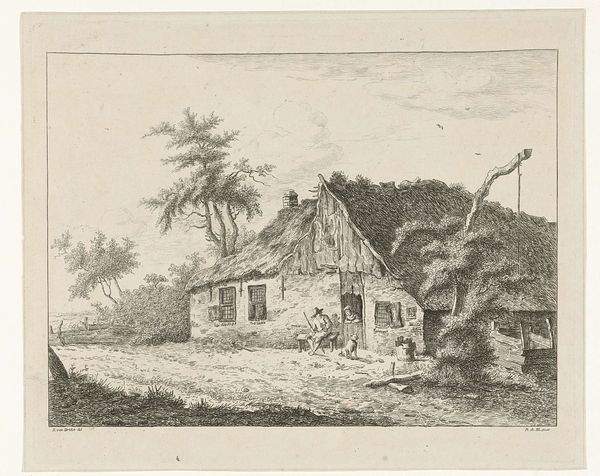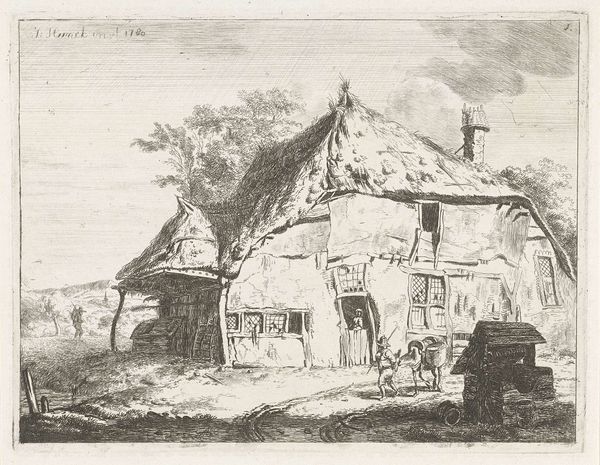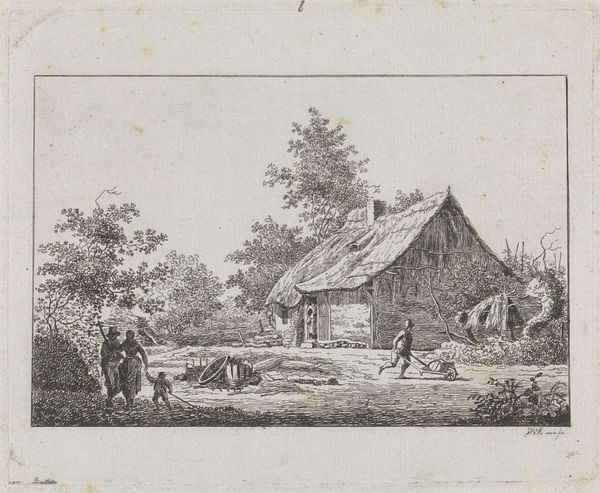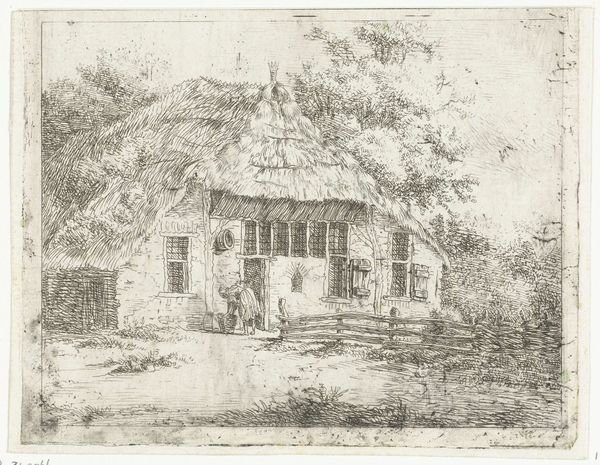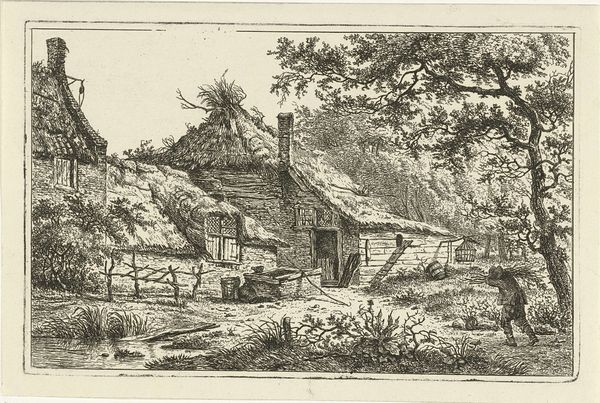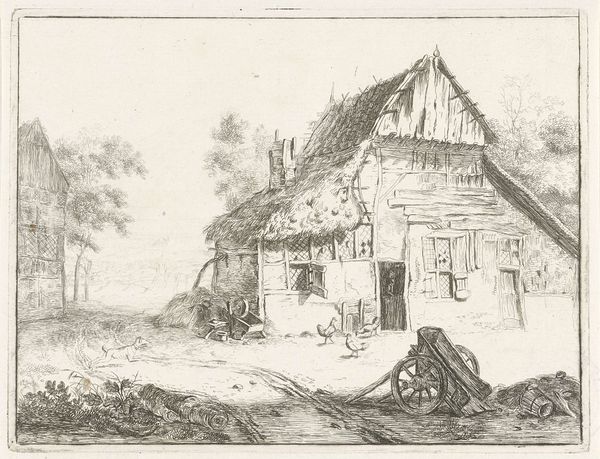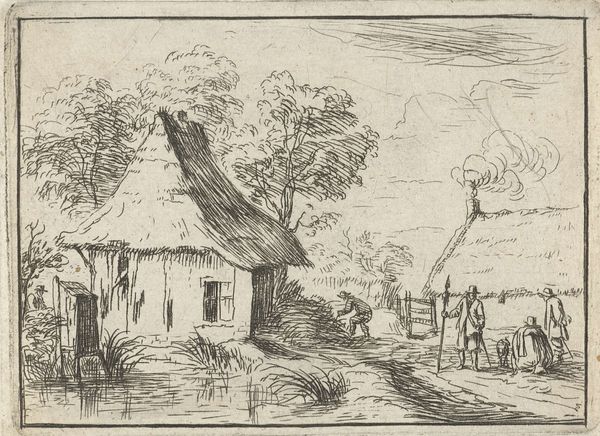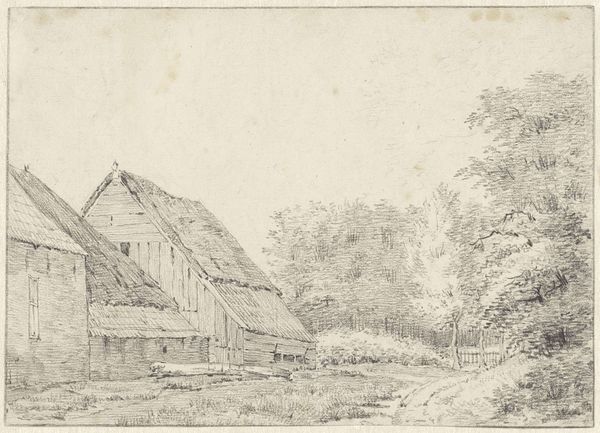
etching
#
dutch-golden-age
#
pen sketch
#
etching
#
old engraving style
#
landscape
#
figuration
#
line
#
genre-painting
#
realism
Dimensions: height 106 mm, width 149 mm
Copyright: Rijks Museum: Open Domain
Editor: This etching by Johan Christiaan Willem Safft, titled "Man met een spade bij een boerderij," which translates to "Man with a spade by a farm," dates sometime between 1788 and 1846. It's so detailed, especially considering the medium. What do you see in this piece from a formal perspective? Curator: The composition is immediately striking. Note the balance Safft achieves between the detailed foreground, dominated by the architecture and the figure, and the softer, more diffused background. The use of line is exquisite. Consider how the varying densities of line weight create depth and texture, especially in the rendering of the thatched roof and the foliage. Editor: So it’s really about the lines and how they're used? Curator: Precisely. The formal elements dictate the narrative. Ask yourself, what is the effect of the parallel lines suggesting shadow versus the delicate hatching used to define form? Where does your eye travel and why? Look closely at the contrast in textures: the rough texture of the thatch, versus the relatively smoother surfaces of the building walls. How do these contrasting textures inform your reading of the image? Editor: That contrast definitely adds to the depth and draws my eye around the image more. I'd been too focused on what the man was doing rather than how it was made. Curator: The relationship between the forms establishes a visual hierarchy that communicates meaning as much as, if not more than, the depicted scene itself. A close reading of the formal construction is thus vital. Editor: I see what you mean. Thinking about those details really unlocks a deeper understanding. Thanks! Curator: Indeed. Formal analysis provides a tangible framework. Thank you for your observations as well.
Comments
No comments
Be the first to comment and join the conversation on the ultimate creative platform.
